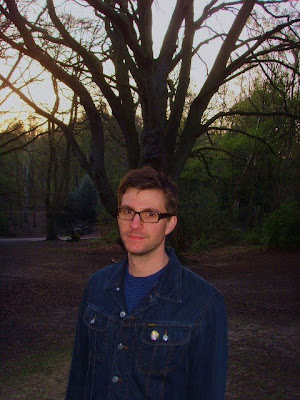 In the woods.
In the woods.
Wednesday, 30 April 2008
Hampstead Heath, London, April 2008
Tate Modern, London, April 2008
 In the Turbine Hall of the Tate Modern, Doris Salcedo's "Shibboleth," or "The Crack" as it is more commonly referred to, has been filled in:
In the Turbine Hall of the Tate Modern, Doris Salcedo's "Shibboleth," or "The Crack" as it is more commonly referred to, has been filled in:Doris Salcedo’s Shibboleth is the first work to intervene directly in the fabric of the Turbine Hall. Rather than fill this iconic space with a conventional sculpture or installation, Salcedo has created a subterranean chasm that stretches the length of the Turbine Hall. The concrete walls of the crevice are ruptured by a steel mesh fence, creating a tension between these elements that resist yet depend on one another. By making the floor the principal focus of her project, Salcedo dramatically shifts our perception of the Turbine Hall’s architecture, subtly subverting its claims to monumentality and grandeur. Shibboleth asks questions about the interaction of sculpture and space, about architecture and the values it enshrines, and about the shaky ideological foundations on which Western notions of modernity are built.
In particular, Salcedo is addressing a long legacy of racism and colonialism that underlies the modern world. A ‘shibboleth’ is a custom, phrase or use of language that acts as a test of belonging to a particular social group or class. By definition, it is used to exclude those deemed unsuitable to join this group.
‘The history of racism’, Salcedo writes, ‘runs parallel to the history of modernity, and is its untold dark side’. For hundreds of years, Western ideas of progress and prosperity have been underpinned by colonial exploitation and the withdrawal of basic rights from others. Our own time, Salcedo is keen to remind us, remains defined by the existence of a huge socially excluded underclass, in Western as well as post-colonial societies.
In breaking open the floor of the museum, Salcedo is exposing a fracture in modernity itself. Her work encourages us to confront uncomfortable truths about our history and about ourselves with absolute candidness, and without self-deception.








